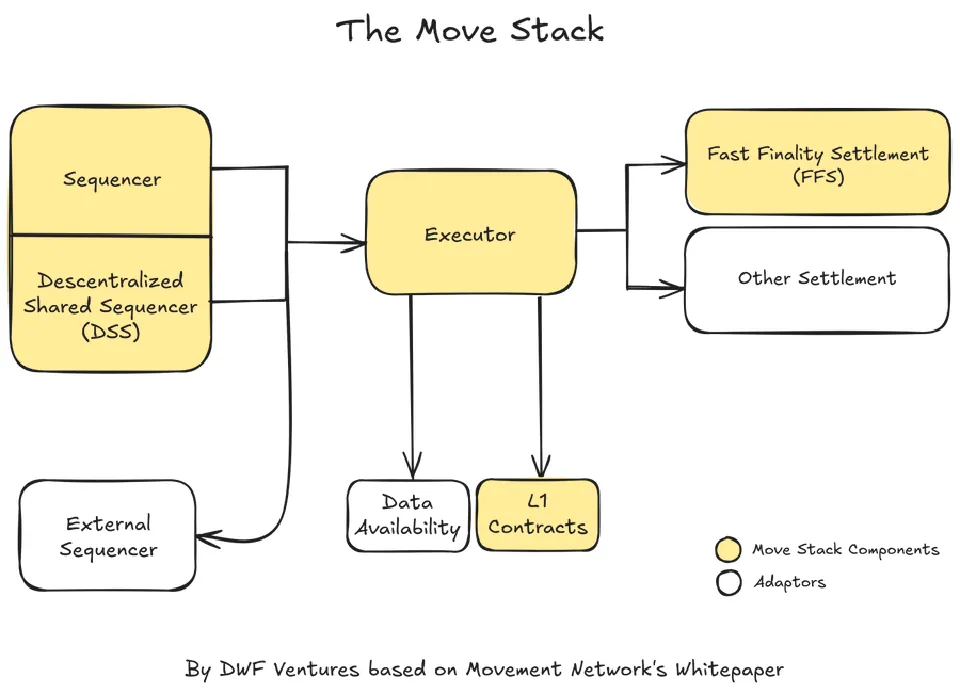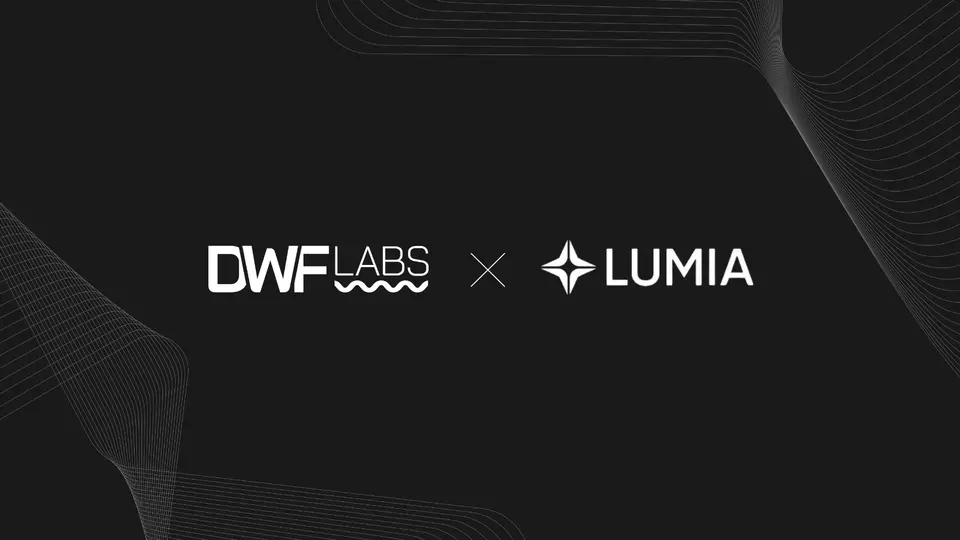In early 2025, Movement Network Foundation officially launched its public mainnet beta, introducing its modular Layer 2 (L2) solution to the wider developer and user community.
But with over 100 Layer 2 solutions already in the market, what makes Movement different? DWF Ventures took a closer look, let’s dive in.
Introduction
Movement, the secure and scalable blockchain, is built on a modular architecture that integrates the Move Virtual Machine (MoveVM) alongside the Ethereum Virtual Machine (EVM). This means that developers can write smart contracts in both MoveVM’s Move and EVM’s Solidity languages, making Movement one of the first Layer 2s to offer a unified development environment for two ecosystems – enabling the creation of more scalable, efficient, and secure decentralised applications (dApps).
This positions Movement as a bridge between high-performance Move-based blockchains like Aptos and Sui, and Ethereum ecosystem’s robust liquidity and user base. This combination lays the groundwork for how Movement is built and operates at a technical level.
Key Movement's Technologies
The technical architecture behind Movement is built on the Move Stack—a flexible framework designed to support hybrid smart contract execution and seamless interoperability. To handle data availability, it integrates with Celestia, a purpose-built blockchain, as its modular data availability (DA) layer.
The Move Stack consists of three key components:
1. Move Executor
The Move Executor is responsible for processing all incoming transactions from the mempool. It identifies whether a transaction is written in Move or Solidity, then converts it accordingly for execution on the Move Virtual Machine (MoveVM). This hybrid execution model supports parallel processing, helping improve throughput and reduce latency, which is particularly useful for performance-heavy use cases in gaming and DeFi.
2. Decentralised Shared Sequencer (DSS)
Instead of relying on a centralised sequencer, Movement uses a Decentralised Shared Sequencer to process transactions. Experts believe that shared sequencing is a critical solution for rollup-based L2s that will allow them to deal with issues such as MEV exploits, in particular sandwich and frontrunning attacks. This design reduces the risk of censorship and ensures greater network resilience. Built on a proof-of-stake consensus, Movement’s DSS also supports multi-asset staking, giving validators the flexibility to secure the network using different tokens.
Additionally, the DSS helps enable cross-rollup interoperability, opening pathways for cross-chain liquidity pools and asset transfers between Layer 2 ecosystems.
3. Fast Finality Settlement (FFS)
Movement’s Fast Finality Settlement mechanism is tailored for applications that demand quick, reliable transaction confirmations. By merging optimistic rollup principles with additional economic security, FFS delivers low-latency settlement for use cases such as high-frequency trading and real-time microtransactions in gaming. The FFS includes postconfirmations, building on the hot topic of preconfirmations, which the Ethereum community started actively discussing throughout 2024.
This Movement blockchain’s technical foundation has supported early adoption, with over 160 crypto projects currently building within the ecosystem.

Movement Ecosystem Growth
In the lead-up to mainnet, as we’ve mentioned, Movement has already onboarded over 160 projects, with the most traction in DeFi, infrastructure, and real-world assets (RWAs). Recent ecosystem partnerships, such as the one with ERC3643, reflect a growing interest in institutional-grade applications.
This activity is driven by a strong combination of ecosystem tools and community-focused incentives. The Movement Foundation supports builders with grants and infrastructure, while the in-house accelerator, Move Collective, guides teams through development and go-to-market. One of the most notable initiatives is the Cornucopia airdrop program—among the largest of its kind—which helped the project secure $233 million in TVL and reward early contributors.

The Co-Founder of Movement Labs, Rushi Manche, emphasises that Movement is a community-first blockchain, with 60% of its native cryptocurrency (MOVE) supply allocated to its users. With consistent ecosystem engagement, visible support for builders, and a bottom-up approach, Movement continues to grow from within. However, it still may face several potential challenges.
Challenges and Considerations
The Move programming language, though technically advanced, presents a learning curve that may slow developer onboarding compared to more widely adopted languages like Solidity and Rust. On the infrastructure side, the use of a shared sequencer and parallel processing promises improved throughput, but early community feedback has pointed to issues such as transaction delays and bridge performance, raising concerns about real-world scalability. Additionally, maintaining ecosystem momentum will require continued incentives, strong project onboarding, and sustained market interest.
With these challenges in mind, what’s on the roadmap?
Movement Roadmap: What Comes Next
With the mainnet beta only recently launched, Movement’s roadmap remains in its early stages, and several tools and features outlined in the whitepaper are still under development. To maintain momentum and address challenges around scalability and ecosystem growth, the team has outlined several key initiatives.
These include:
- $250 million Cornucopia Rush, a liquidity programme aimed at supporting early DeFi projects;
- Parthenon V2, which introduces gamified incentives to encourage user participation;
- MoveDrop, a token distribution campaign scheduled for April to onboard new contributors.
Additional ecosystem initiatives are also planned to support ongoing activity and retention. Backed by investors such as Polychain Capital, and YZI Labs, Movement is now entering a crucial phase focused on scaling adoption and delivering on its modular infrastructure vision.
Conclusion
The launch of Movement Network’s public mainnet beta marks an important step in the evolution of modular Layer 2s. By combining the speed and safety of the MoveVM with EVM compatibility, alongside features like fast finality and shared sequencing, Movement introduces a new approach to building scalable applications within the Layer 2 landscape.
With dozens of crypto projects already building on Movement, strong community support, and a clear roadmap ahead, Movement is well-positioned to become a foundation for a new L2 ecosystem, similar to giants such as Coinbase’s Base or Optimism. The next months will be important in showing how the network can scale, improve performance, and keep developers and users engaged.
At DWF Ventures, we’re enthusiastic about the Movement Network. We are always looking for teams leveraging its unique technology to drive innovation.
If you're building something groundbreaking, feel free to connect with our crypto venture capital firm.



